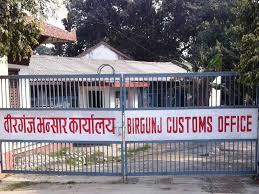Regular imports via Motihari-Amlekhgunj petroleum pipeline begin

KATHMANDU, FEBRUARY 17: The regular imports of petroleum products have begun through the Motihari-Amlekhgunj petroleum pipeline, connecting India to Bara, Nepal. The Madhesh Provincial Office of Nepal Oil Corporation (NOC) in Amlekhgunj confirmed that petrol and kerosene are now being imported through the pipeline following the completion of the cross-border expansion project.
According to Pralayankar Acharya, Chief of the NOC's Madhesh Provincial Office, the pipeline expansion is fully completed, and regular imports have been underway for the past few days. “Petrol and kerosene are now flowing through the pipeline,” he said, adding, “We have officially started distributing the imported petrol to depots in major cities across Nepal.”
As part of the project, the Indian Oil Corporation (IOC) constructed two petrol tanks with a capacity of 4,100 kiloliters each, two transmit tanks with a capacity of 250 kiloliters each, 24 fully automated loading bays for petrol transport, a pump house, and a laboratory at the Amlekhgunj depot.
The project also included upgrading the fire-fighting system, installing an Oil Water Separator (OWS) system, and constructing a PMCC control room. Likhita Infrastructure Pvt. Ltd. was contracted to complete all infrastructure by 2023, but due to various delays, the pipeline expansion was only recently finalized.
The IOC also built two transmit tanks for storing blended fuel (suitable for both petrol and diesel) and a 3,000-kiloliter firewater tank for depot safety. In the first phase of the project, diesel imports through the pipeline began on August 11, 2019.
“Although the pipeline was capable of transporting petrol and kerosene, the limited storage capacity previously required importing these products by tanker,” Acharya explained. “With the project's completion, the regular imports of petrol, diesel, and kerosene are now fully operational through the pipeline.”
Acharya noted that using the Motihari-Amlekhgunj pipeline would eliminate technical losses, reduce transportation costs, and help minimize environmental pollution. The Amlekhgunj depot’s storage capacity currently stands at 24,840 kiloliters for diesel and 16,630 kiloliters for petrol.

Prabhu Group accused of embezzling Rs 6 billion from 4,000 cooperatives

Business groups condemn violence, demand compensation to loss

Security beefed up in Valley in view of mass rallies

Apex Court declines interim order for Ghising

Global IME Bank, IFC ink deal to boost digital banking

Birgunj customs sees imports worth Rs 390 billion in 8 months

Nepal faces trade deficit of 2.68 billion with Bangladesh



Feedback